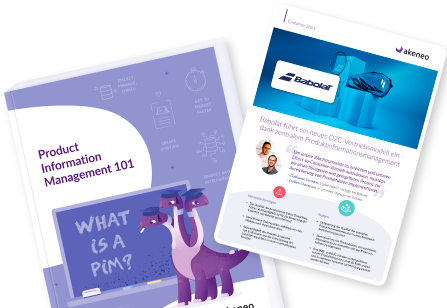Oct 21, 2018
Online sales continue to grow in the United States and around the world. In 2016 alone, the US had 177.8 million online buyers who made purchases tota...

Online sales continue to grow in the United States and around the world. In 2016 alone, the US had 177.8 million online buyers who made purchases totaling $409.2 billion. By 2021, those numbers are expected to significantly increase, with a predicted 204.4 million online purchasers spending a total of $603.3 billion. While offline sales remain 10 times larger than online, eCommerce sales are growing three times faster than offline and will represent a much larger percentage of overall sales. To ensure you keep pace with changing buyer touchpoints, it’s critical to deliver an omnichannel customer experience.
The digital transformation has boosted the importance of omnichannel customer experiences in recent years. Ten years ago, a company could simply put its catalog on the web as an online store. But then five years later, they needed to also offer a mobile experience to ensure they would not lose customers to the competition. Today, shopping experiences must make it easy to buy at any time of the day, from anywhere, and through a variety of devices. As a result of this evolution, the boundaries between eCommerce and point of sale are less and less visible: the customer comes to a brand by clicking on an advertisement, then goes to the website before ending up in a store.
In the era of digital transformation, the boundaries between eCommerce and point of sale have become increasingly blurred.
But this omnichannel logic is not limited to the ability of a company to offer its products or services through all channels in the same way. The customer experience must be adapted and contextualized for each channel to support the customer’s buying journey. If a website allows you to organize products by category, the mobile experience will favor a more visual style, while in-store advisors will be able to answer specific questions to address the smallest details sought by the customer.
Omnichannel offers the opportunity to combine the benefits of the different channels, each with their own specificities. The winning strategy is to offer differentiated product experiences, depending on the channel used. Who has not experienced the disappointment of going to a store, after doing research online, to get additional information from a merchant who merely opens a web page to read … what you have already discovered yourself? At a time when all information is now available online, the physical channel must offer added value that the buyer cannot find elsewhere. The seller must therefore offer personalized support and recommendations useful to the act of purchase.
Global personal care and beauty retailer Sephora understood the benefit of this approach. Their in-store sales clerks have become “beauty consultants” who take advantage of digital technology to offer personalized advice to customers. At the same time, Sephora also follows their clients’ comments and questions on social networks in order to identify opportunities for improving the experience.
Each channel must provide valuable product data and information to help the purchaser through the buying journey.
Companies have no choice but to manage their product information across a variety of sales channels. In addition to ensuring consistency across channels, brands must also embrace new channels and take into account their unique characteristics. For example, with social networks, broadcasting images can improve the conversion rate on a product. Imagine that by clicking on the image of a product on Instagram, the consumer could discover your product with a description adapted to its uses, and make an emotional connection with the item and your brand. In addition, with the rise of voice technologies, organizations need to manage product data very precisely to provide the experience customers expect. Voice inquiries tend to be at least 15 words including phrases like “where,” “how,” and “what.” Organizations must understand how customers interact with these channels and provide optimized product descriptions in order for their products to be discovered using these new technologies. To effectively work with all of these technological situations, organizations must have solutions in place to manage channel specific product data and emotional descriptions.
Marketplaces, meanwhile, bring their own challenges. For example, as certain marketplaces like Amazon have specific requirements, you may not be able to provide the same emotional context or experiences as your own website. Organizations must find a way to convey their message across both their website where they have complete control and across marketplaces where they must fulfill certain requirements.
It becomes urgent for brands to realize that omnichannel is not only about managing customer interactions but also about providing contextual information and a product experience that meets customer expectations. It is, therefore, necessary to organize product data and to define a data model to help broadcast the right information to the right channel. The next generation of product experience management (PXM) solutions make it possible to easily launch offers across channels by providing the necessary contextual information. This is the critical component for brands to optimize their omnichannel customer experiences.
Remember: Omnichannel isn’t just about managing customer interactions across channels; it also requires providing contextual information to match customer expectations.
Interested in learning more about how Akeneo PIM solutions can help you deliver omnichannel customer experiences? Contact our team.
Sign up for our newsletter and stay ahead of the curve on everything you need to know about product information management, product experience management and how to unlock growth for your organization.
